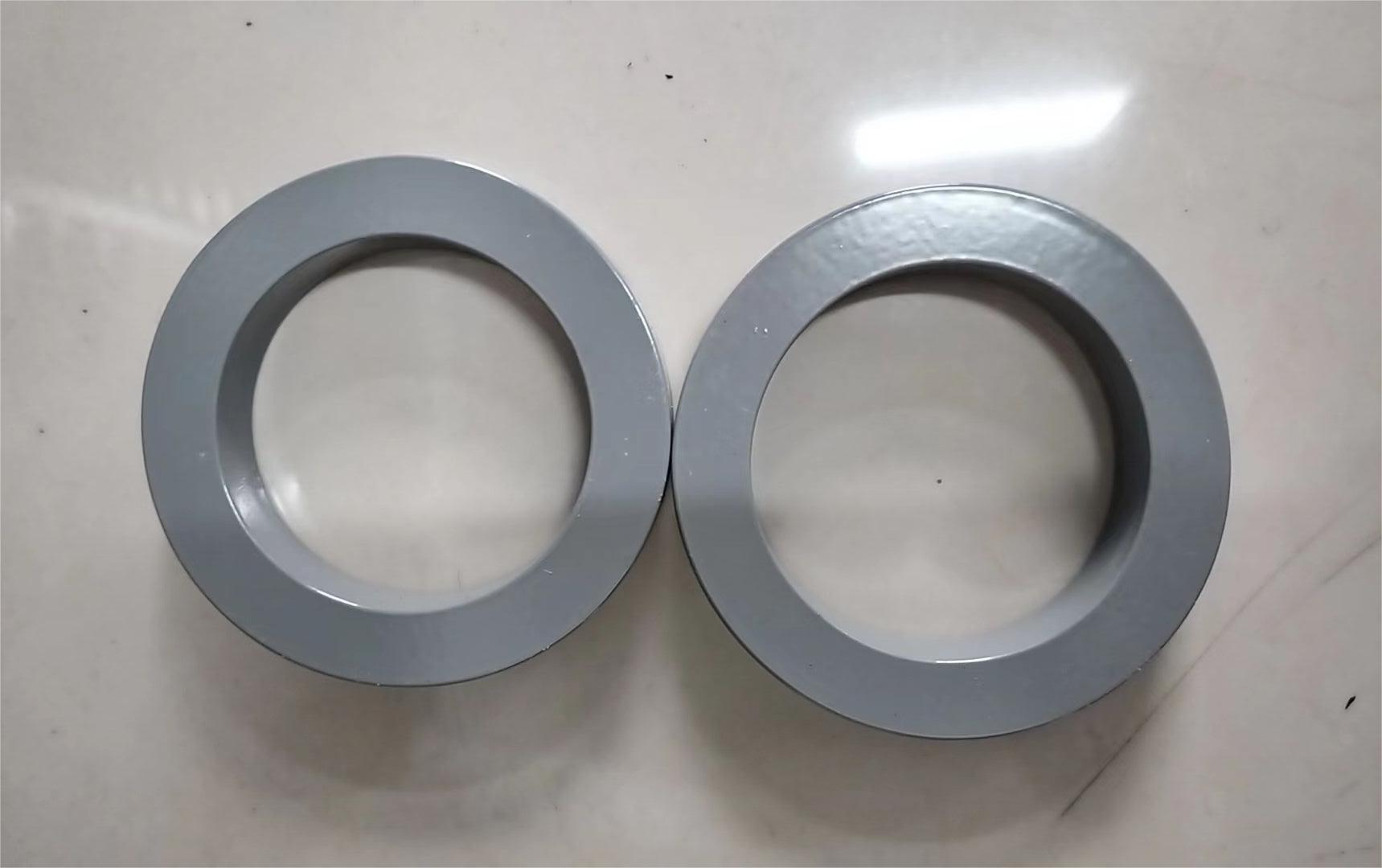With the accelerating wave of automotive electrification and intelligentization, the market demand for advanced magnetic materials has experienced explosive growth. Among numerous materials, nanocrystalline cores, with their unique advantages, have become a core pillar supporting the miniaturization, high efficiency, and thermal stability of modern automotive power electronic devices, and have become an indispensable key component in the upgrading of the automotive industry.

nanocrystalline cores are soft magnetic materials made from amorphous alloys that have undergone controlled annealing, with grain sizes typically less than 100 nanometers. This ultra-fine grain structure endows them with excellent performance in terms of high permeability and low iron loss, and can operate stably over a wide frequency and temperature range. Compared with traditional ferrite or silicon steel materials, they have significant advantages, especially suitable for high-frequency, high-efficiency power applications in automobiles.
The global automotive industry is undergoing a triple transformation—electrification, connectivity, and energy efficiency upgrades—with unprecedented intensity and breadth. With battery electric vehicles (BEVs) and plug-in hybrid electric vehicles (PHEVs) becoming mainstream, their requirements for power conversion systems are becoming increasingly stringent, demanding miniaturization, lightweight design, and high efficiency.
Automotive system voltages are also continuously increasing, from 48V mild hybrid systems to 800V high-voltage battery platforms, with constant technological iterations. This trend places higher standards on electromagnetic compatibility (EMC) and thermal stability. These multiple demands are driving the accelerated penetration of nanocrystalline materials into the automotive magnetic component field.
For automotive power systems, nanocrystalline cores are not simply about performance optimization, but rather a structural cornerstone for the implementation of next-generation technologies. They integrate miniaturization, high efficiency, and wide-bandwidth electromagnetic interference (EMI) suppression, providing engineers with entirely new design possibilities.
With nanocrystalline cores, engineers can design smaller and lighter converters, chargers, and inverters without sacrificing performance. As automobiles evolve towards higher voltages and higher frequencies, it has become a core element for companies to build technological barriers.
Inverters and converters are the core of automotive electrical systems, where nanocrystalline cores play a crucial role. They support high-frequency operation of inverters while reducing magnetic losses, improving thermal stability, and adapting to complex automotive operating conditions.
From -40°C to 180°C, nanocrystalline cores maintain stable magnetic performance. This characteristic provides a compact and reliable converter solution for pure electric and plug-in hybrid vehicle platforms.
On-Board chargers (OBCs) have extremely high power density requirements, which nanocrystalline cores perfectly meet. They can achieve power densities up to 3.8 kW/L, significantly reducing system size while providing excellent electromagnetic interference suppression.
Even at high switching frequencies, the low-loss characteristics of nanocrystalline cores do not degrade. This ensures efficient energy transfer during AC-DC conversion, reduces energy waste, and improves the overall performance of the on-board charging system.
nanocrystalline cores also demonstrate significant value in DC fast charging and wireless charging equipment. They facilitate the creation of miniaturized, high-efficiency transformers and common-mode inductors, adapting to the compact installation requirements of charging scenarios.
Their ability to withstand high excitation levels and high current densities effectively improves the reliability of charging equipment. Simultaneously, they reduce system heat generation and alleviate heat dissipation pressure, supporting the widespread adoption of fast charging technology.
Electromagnetic compatibility (EMC) filtering is crucial for the safe operation of automobiles, and nanocrystalline common-mode inductors are widely used in this field. They effectively suppress electromagnetic interference in high-voltage circuits, maintaining system stability.
Furthermore, the unique magnetic properties of nanocrystalline cores can alleviate bearing current issues in traction motors. This advantage directly improves motor durability and extends the lifespan of electric vehicle motors.
Compared to traditional ferrite or silicon steel magnetic cores, the advantages of nanocrystalline cores are decisive. It not only boasts high power density and strong wideband electromagnetic interference attenuation, but also maintains low iron loss characteristics even in high-frequency environments. Its wide operating temperature range allows it to adapt to harsh installation environments such as powertrains and engine compartments.
By reducing the size and weight of magnetic components, nanocrystalline cores directly contribute to improved automotive energy efficiency and extended driving range. Although its production cost is relatively high, from a system-level perspective, the advantages it brings, such as reduced heat dissipation requirements and smaller package size, already outweigh the cost premium of the material itself.
Integrating nanocrystalline cores into automotive systems requires sophisticated engineering design. Designers must strike a balance between material cost, thermal management, resistance to mechanical vibration, and manufacturability.
Automotive-grade reliability testing is crucial, including multi-dimensional assessments such as temperature cycling, humidity environment, and vibration durability. Furthermore, supply chain maturity and mass production scalability remain unresolved challenges for its large-scale application in the automotive field. However, through reasonable design optimization, the long-term stability and cost-effectiveness of nanocrystalline cores in high-frequency environments have been fully validated.